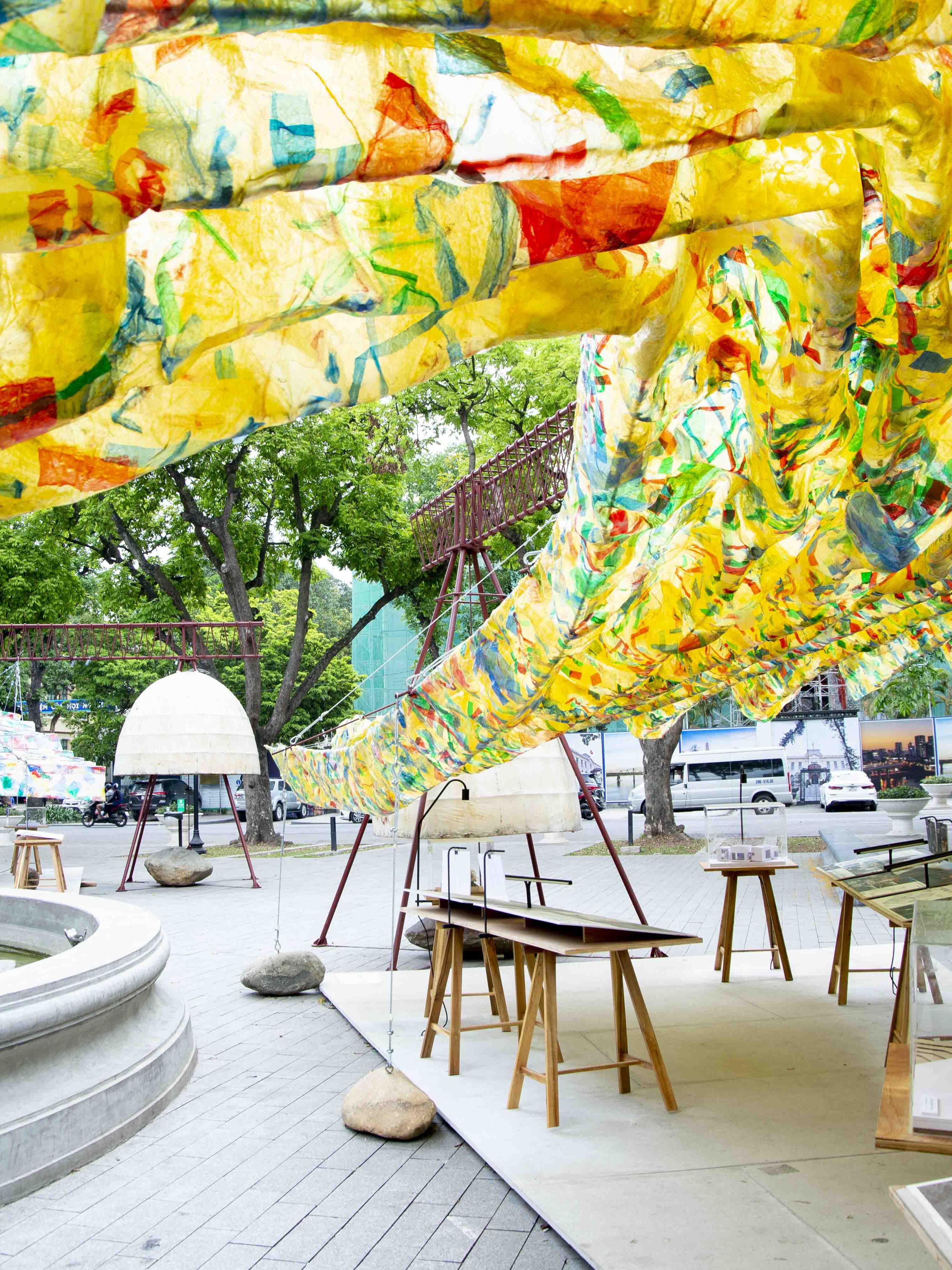A paper dream and a memory dome
The story is told through shapes, colors, and spatial rhythms through Top 10 Pavilion 2024, a public art exhibition recently inaugurated in Hanoi, concluding the seventh season of the Top 10 Awards, one of the most prestigious awards in the field of Architecture - Interior Design - Green Building in Vietnam.
At the center of the Pavilion is a dome made from dó paper - an ancient paper that our ancestors used to copy scriptures, paint pictures, and print books. But this time, the paper does not hold words, but light. The light filters through the thin folds of the paper, casting shadows of time on the ground, reminding viewers of a Vietnam that is handmade, patient, and meticulous to every detail.
Architect Dao Hoang shared: "The materials that were once discarded, when reborn, are no longer waste but become materials for contemplation. Pavilion is a symbol of the ability to start over, from what seemed to have ended. It is a genuine and meaningful slice of modern architecture, where beauty comes not only from form, but also from attitude and responsible thinking."
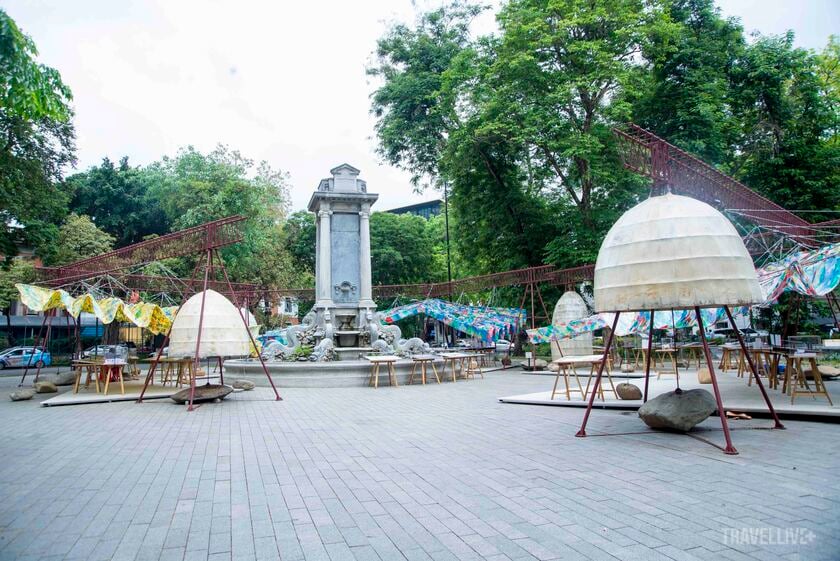

The center of the Pavilion is a dome made from do paper.
Each fold on the paper is like a wrinkle on the face of the artisan. The uneven curves, the small scratches, all become evidence of the hand and soul touching the material. In an industrial world, dó paper acts as a soft resistance, reminding us of imperfect beauty, not mass-produced, but dense with memories.
Interwoven on the paper are layers of recycled plastic that used to be plastic bags thrown away somewhere, in the canal, on the roadside, or in some nameless trash can. Now, plastic is no longer lifeless. Plastic is melted, shaped, and assembled like pieces of a memory puzzle. Each piece of plastic has its own color, its own history, a crack or mark of time.

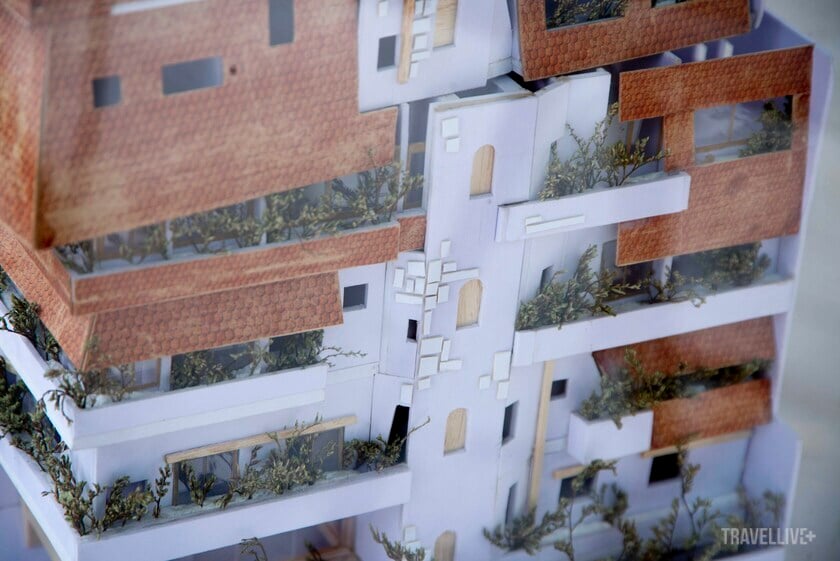

Architectural works are designed
But when assembled on an iron frame, the old plastic suddenly sparkles, not because it is shiny, but because it is trusted. Believes that art can still be born from trash. That useless things can still become symbols. That remnants can still form architecture.
Unlike paper or plastic, steel comes to the Pavilion with a cold and precise look. It is not soft, not handcrafted, but it is necessary as the skeleton for a fragile body. Standing in the middle of the Pavilion, one can clearly see the silent dialogue between the three materials: paper representing tradition, plastic representing the forgotten past, and steel representing the mechanical present.
This blend is not forced. On the contrary, it creates a symphony of materials, where each material is an instrument, each curve is a melody, and each wall panel is a whisper about the relationship between humans - environment - technology.
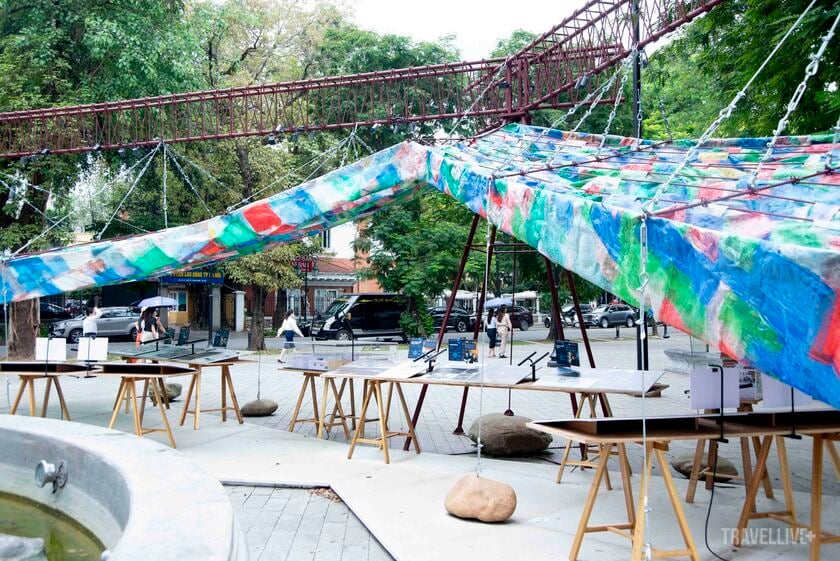
Standing in the middle of the Pavilion, one can clearly see the silent dialogue between the three materials.
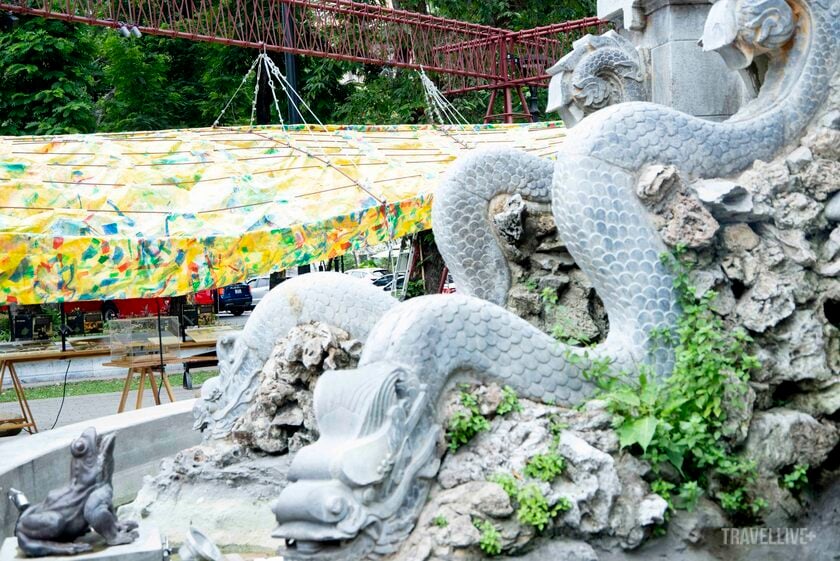
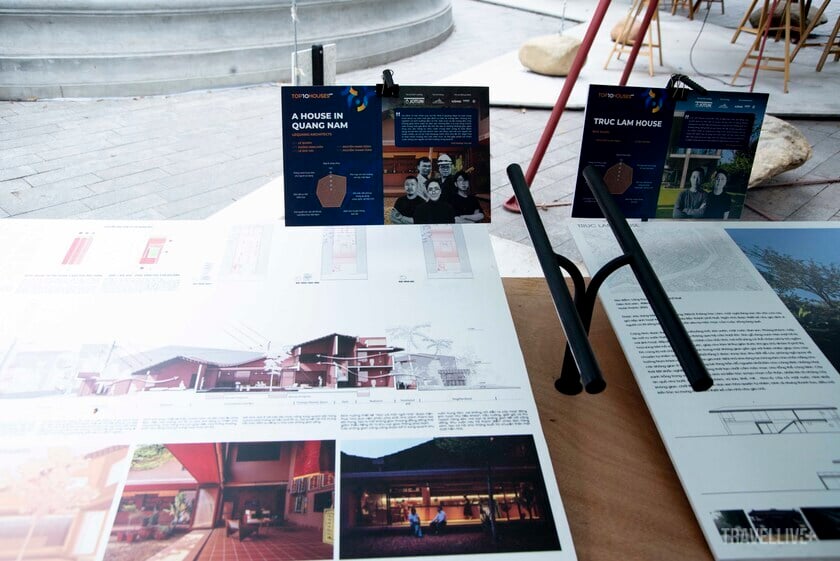
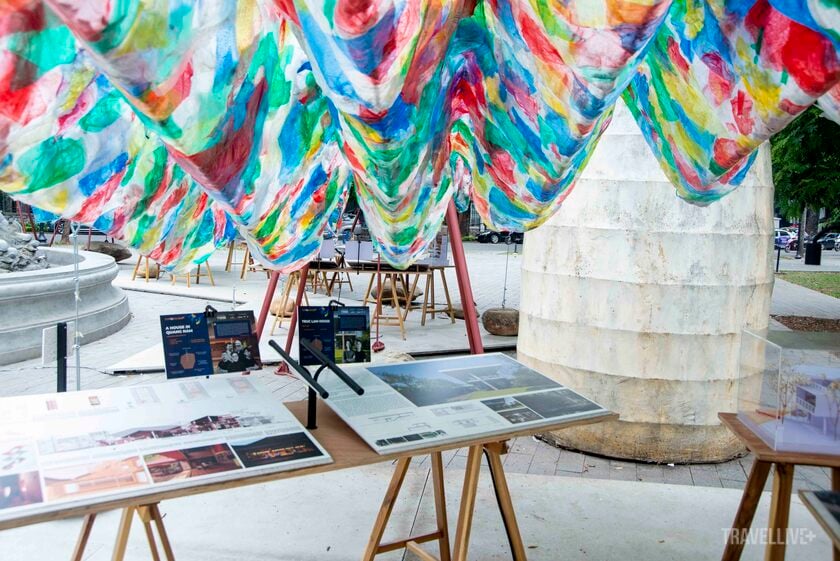
Where every material is an instrument, every curve is a melody
Top 10 Pavilion - a small dream in the middle of the city
The building is not large. The Pavilion is nestled in a space just large enough to walk slowly, to look up, and to bow one's head in thought. But it is precisely this smallness that highlights the beauty of refinement - an art that is not ostentatious, but lives in depth.
The Pavilion does not just display architecture, it tells stories. Stories of architects who started with dreams, stories of communities contributing labor, materials, and ideas, and stories of how a society faces the environmental crisis: not hiding, not blaming, but transforming.
Therefore, even though it is only a temporary exhibition, the Pavilion still lives as a work of art for humanity, where beauty is linked to action, where shapes are built with faith, and where people can stop to ask themselves: "What have I done to this world?"



With 349 entries, 30 outstanding works were selected from three categories.
Accompanying the Pavilion is the Top 10 Awards 2024 ceremony, marking a 7-year milestone of honoring works that are not only beautiful in form, but also have humanistic depth and community value.
With 349 entries, 30 outstanding works were selected from three categories: Housing - Interior - Green Building. But what is worth mentioning is not the number, but the spirit: each award-winning work carries within it a vivid story about the land it is attached to, the people it serves, and the issues it addresses.
A house for the Red Dao people in the middle of the Hoang Su Phi forest, a coffee shop converted from a warehouse in Dong Thap, a community library made from bamboo in the Central region... Those works are like poems written in bricks, bamboo, light, wind, and the smell of new land, not noisy but profound.
When architecture no longer stands alone
Top 10 Awards is not just an award but an open space for meeting, learning and sharing between generations of architects, between designers and the community, between tradition and the future.
There, architecture is no longer the privilege of a group of people. It becomes a social dialogue: where construction is linked to responsibility, where aesthetics is linked to ecology, where creativity is linked to life. Designers no longer think only about materials but also about impact, about memories, about the children who will grow up in that house, that street, that garden.
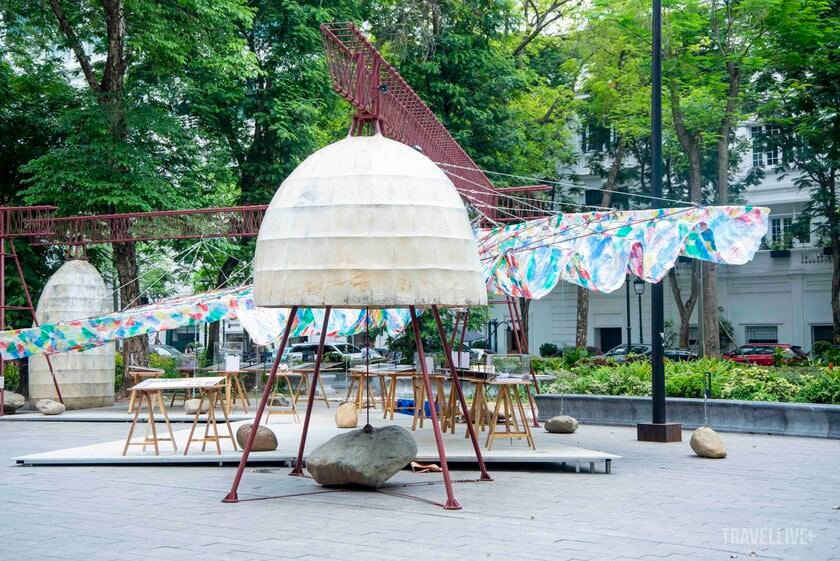

The dome is made from Do paper - an ancient paper that our ancestors used to copy scriptures, draw pictures, and print books.
Top 10 Pavilion is the answer. No noise, no affirmation, just a silent existence like a poem in the heart of the city. A paper dome breathing with wind. A plastic wall sparkling with memories. A steel frame holding tightly onto faith. A small dream but enough to stir up big things.
And if you pass by the Pavilion on a May afternoon, stop by, the exhibition is on display at Dien Hong flower garden, Hoan Kiem until May 19, 2025. Under that do paper canopy, listen to the sound of time, listen to the sound of old plastic telling the story of revival, listen to the sound of steel echoing the footsteps of the future. Because in the midst of today's chaos, sometimes, architecture is the last storyteller, telling with light, telling with silence, telling with what remains after the world has said too much.





